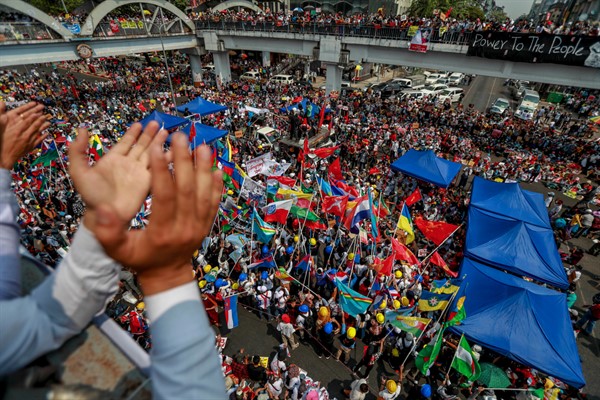When Myanmar’s military overthrew the democratically elected government led by Aung San Suu Kyi on Feb. 1, one resident of Yangon, the country’s largest city, was initially indifferent. A 34-year-old professional translator, he had lost faith in Myanmar’s public and its political classes long ago, he told me in a recent phone conversation. Suu Kyi and her party, the National League for Democracy, or NLD, seemed too willing to compromise with the military and make progress in half measures, as evidenced by the country’s flagging, decade-long transition to democracy.
But then, something unexpected happened: The people of Myanmar began to fight back against the new junta and its leader, the military’s commander-in-chief, Gen. Min Aung Hlaing. After an initial stunned and uncertain silence following the coup, a viral Facebook post encouraged residents of major cities to gather by their windows and on balconies and bang pots and pans, in a form of synchronized, peaceful protest that has since become a nightly ritual. Emboldened, doctors and medical staff across the country went on strike, and the first street demonstration took place in the northern city of Mandalay on Feb. 4. From there, resistance to the junta escalated dramatically; now, hundreds of thousands of peaceful protesters take to the streets every day, despite the sweltering heat, in big cities like Yangon and in the capital, Naypyidaw, as well as hundreds of smaller towns across the country.
“It is the first time in many years that people expressed their resistance to the government. I thought it was impossible for the Burmese,” said the translator in Yangon, who asked not to be named because he feared reprisals from the junta. “I was very excited. Somehow, my faith in Burma is restored.”

